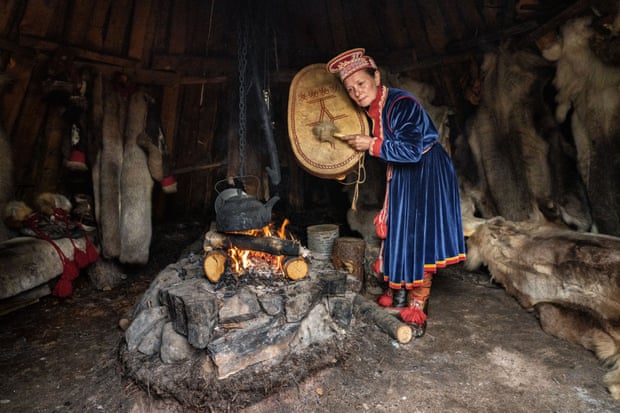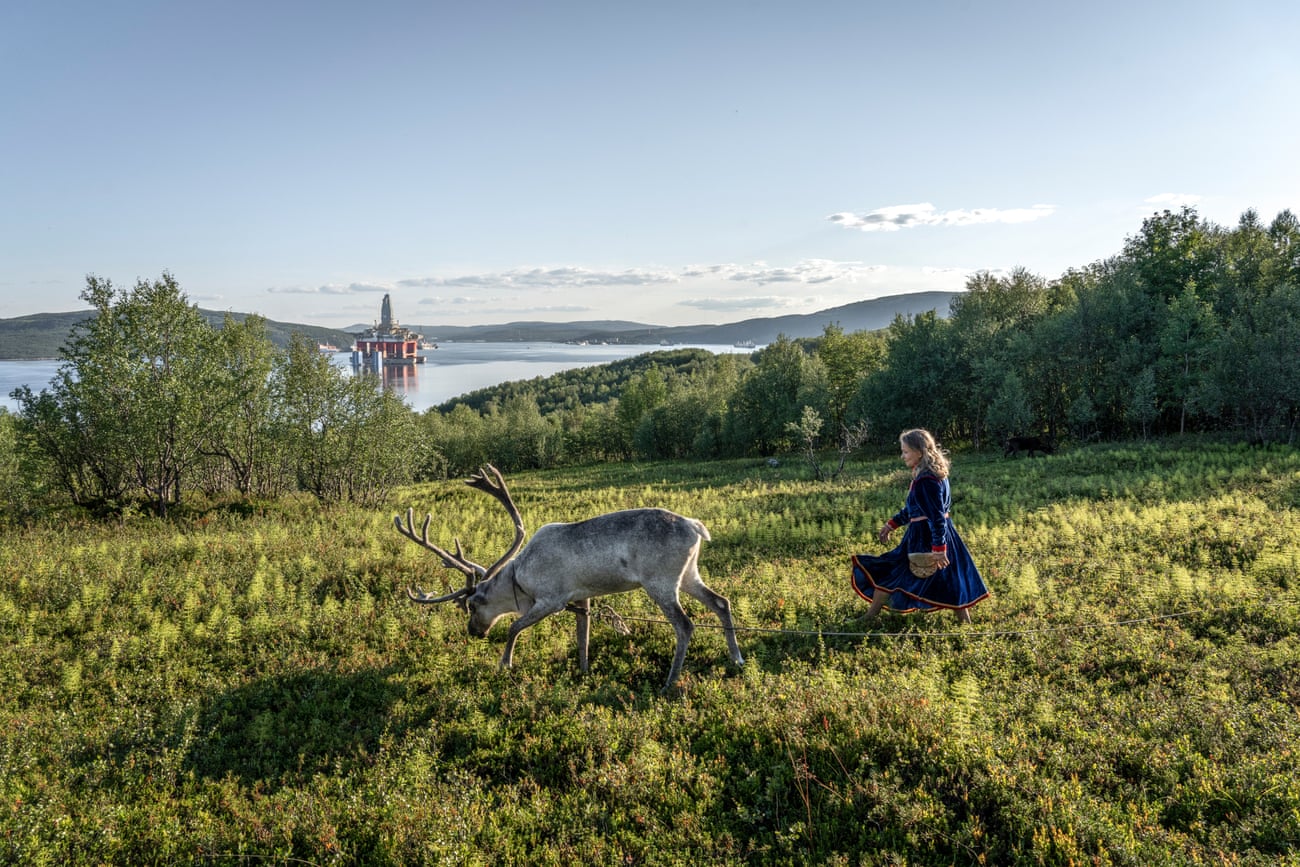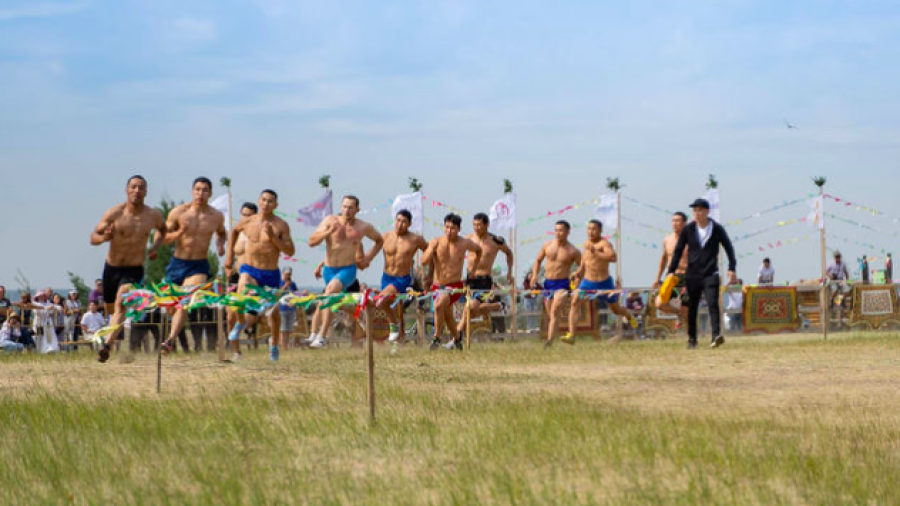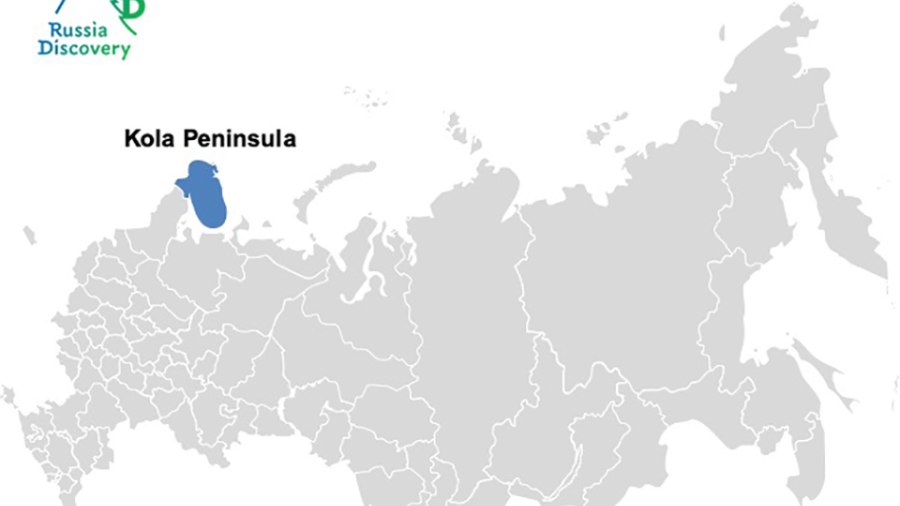
Interactions with the State
Module 2: Interactions with the State
Learning Outcomes
- Analyze about the history of the relationship between Indigenous communities and the Russian government.
- Discuss how the Russian government and Russian law distinguishes between different types of Indigenous communities.
- Compare and contrast the ways that Indigenous groups in Russia and the US relate to their respective governments.
NOTE: You can find articles, discussion questions, and other resources related to this module below.
Background
The Soviet and Russian governments’ approaches to how they have interacted with Indigenous peoples have been directly related to their approach toward environmental protection and conservation and economic development. Often, this involved the Indigenous people being displaced or the sources of their livelihood being polluted, destroyed, or taken. In the following, you will learn more about this history and connect it with similar situations in the United States.
Soviet Nationalities Policy- The Soviet Union had multiple approaches to its relations with the country’s various ethnic groups.
- In the 1920s, there was a policy of “indigenization.”
- However, this period eventually ended. There was a full reversal of these policies.
- Stalin arrested and killed many people who were cultural activists (writers, artists, teachers, researchers) of various groups, accusing them of plotting against the Soviet government.
- Russification became the main approach in the 1930s onward.
Key Terms
Indigenization- Soviet policy from the 1920s aimed to encourage and develop the languages, literacy, and cultures of the various ethnic groups of the country.
Russification- Policy of promoting the Russian language and culture above all others. This was the policy during the Imperial period and for most of the Soviet period.
Inorodtsy- A Russian word that translates to “people of foreign origin.” Was used by Russians to describe the Indigenous peoples that they encountered as they moved into the eastern portions of the country
Map of the Soviet Union
Nationalities Policy Today
- Russia has two distinct legal designations that are applied to Indigenous groups.
- The first group is the larger nations.
- These often have their own republics (think of them like US states)
- They have the ability to have an additional national language besides Russia and some extra freedoms that other regions do not get.
- Some examples are Tatarstan, Bashkortostan, Sakha Republic
- The other group is known as the “small in numbers nations”
- This label is used for groups with less than 50K people and who are “preserving a traditional way of life.”
Case Study: The Sakha People
Background
- The Sakha people have their own ethnic republic, the Sakha Republic, in eastern Siberia.
- It is the largest sub-national unit (something like a state) in Russia
- Russian and Sakha are the official languages; the population is roughly 50% Sakha, 37% ethnic Russian, and the rest is split between different ethnic groups.
- The head of the republic is an ethnic Sakha person.
- The Sakha have historically been known as the Yakut, however, this is not a name they use for themselves and it derives from a different language.
- In the Sakha Republic, as in some other ethnic republics, there is a requirement that schools teach Sakha in addition to Russian.
- However, the resources given for specific cultural education are often much less than for other subjects.
Before the Soviet Era
- Russian contact with the Sakha people dates to at least the 17th century.
- Russians forced a tax on fur pelts on the Sakha.
- This harsh treatment led to the Sakha rebelling.
- Because of diseases like smallpox, the Sakha population is estimated to have decreased by up to 80% in just the 17th century.
Ihiakh (by Aya Kuo)
The Soviet Era (1917-1991)
- The early Soviet period involved a flourishing of Sakha-language literature. This was an example of Indigenization.
- The 1920s saw Sakha people rebelling against Soviet authorities.
- In the 1930s and 1940s, under Stalin, many Sakha, especially writers, educators, and artists were arrested and imprisoned, often under accusations of “nationalism.”
- Throughout much of the rest of the Soviet period, Sakha was largely spoken only in rural areas. Urban areas were dominated by Russian.
Sakha in Modern Russia (1991-present)
- Today the Sakha have their own republic where Sakha is an official language.
- The most important symbolic shift is making the official name the “Sakha Republic” instead of Yakutia.
- The federal government in Russia has pushed back on some of the independence of the republics. For example, the title of the “President of the Republic” was changed to “Head of the Republic.”
Competition after the summer solstice Ihiakh ceremony (By Veronika Popova)
Discussion Questions:
Consider the different definitions and classifications of Indigenous groups in Russia. What does it mean to be a “small- numbered people” versus a nation with a republic?
Case Study: The Saami People
Background
- Indigenous people of Russia’s northwestern Kola Peninsula
- Their traditional homeland is known as Sápmi and is divided between Russia, Norway, Finland, and Sweden. Most Saami live in Nordic countries.
- Worldwide, the Saami total around 50,000 to 100,000, but only about 2,000 Saami live in Russia.
- Unlike the Sakha, the Saami do not have their own republic. Much of their interactions with state governments have been complicated by the fact that the group is separated by multiple state borders.
- Traditionally, reindeer herding was the basis of the Saami economy.
Before the Soviet Union (The Late Imperial Era, 1822 - 1917)
- The state also divided Indigenous peoples into three groups: “settled,” “nomadic,” and “wandering.” These labels correspond to different levels of “civilization,” with those labeled “settled” being considered by the state as more “civilized” and closer to ethnic Russians in terms of rights.
- During this time, the Russian government’s policy towards inorodtsy was twofold. The state expected them to adopt aspects of Russian culture and society so that they could be given full citizenship. However, the state also allowed some aspects of Indigenous cultures to be preserved, such as traditional leadership structures.
- Areas of Russia that were inhabited by Indigenous peoples were seen as “terra nullius,” or “empty land,” and considered freely available for use by others.
Map of the Kola Peninsula, home of the majority of Russia's Saami
The Soviet Era (1917-1991)
- During this time period, government authorities became more focused on preserving the national identities and territorial autonomy of Indigenous peoples and adopted policies that reflected this.
- However, Russia’s Nomadic Indigenous peoples were still looked down upon and considered to be the lowest on the ladder of social development (with industrialized society as a necessary step to the goal of communism).
- In the 1950s, the Saami people began to be forcibly removed from their traditional lands.
- The Saami’s traditional land became industrialized by the state.

Preparing to perform a Saami ritual; by Natalya Saprunova
The Saami in Modern Russia (1991-present)
- In 2000, the Russian government established a list of the “small numbered peoples of the North,” which includes the Saami. To be a part of the list, an Indigenous group must meet certain criteria.
- Most Russian Saami live in the Murmansk Region. However, they are one of the country’s smallest Indigenous groups, totaling only 0.2% of the province’s citizens.
- There is still a strong focus on developing the Northern areas of the country economically.

Walking a reindeer along the Kola Bay; by Natalya Saprunova
“Being Indigenous in an Unlikely Place: Self-Determination in the Yakut Autonomous Soviet Socialist Republic (1920-1991).” By Evgeniia Sidorova and Roberta Rice. The International Indigenous Policy Journal, Volume 11, Issue 3. https://ojs.lib.uwo.ca/index.php/iipj/article/view/8269
“Borders, Citizenship, and Change: The Case of the Sami People, 1751 - 2008.” By Patrik Lantto. Citizenship Studies, Volume 14, Issue 5. https://www.tandfonline.com/doi/full/10.1080/13621025.2010.506709
“Circumpolar Indigeneity in Canada, Russia, and the United States (Alaska): Do Differences Result in Representational Challenges for the Arctic Council?” By Evgeniia Sidorova. Arctic, Volume 72, Number 1. https://www.jstor.org/stable/26646195#metadata_info_tab_contents
“How Indigenous Peoples of Russia’s Arctic Defend Their Interests: Social, Economic, and Political Foundations of Indigenous Resistance (On the Example of the Golos tundry Protest Movement).” By Arbakhan Magomedov. Anthropology and Archaeology of Eurasia, Volume 58, Issue 4. https://www.tandfonline.com/doi/abs/10.1080/10611959.2020.1811560
“Indigenous-led Grassroots Engagements with Oil Pipelines in the U.S. and Russia: The NoDALP and Komi Movements.” By Maria S. Tysiachniouk, Leah S. Horowitz, Varvara V. Korkina, and Andrey N. Petrov. Environmental Politics, Volume 30, Issue 6. https://www.tandfonline.com/doi/full/10.1080/09644016.2020.1851534
“Indigenous Numerically Small Peoples of the North in a Global and Regional Context.” By IU. V. Popkov. Problems of Economic Transition, Volume 55, Issue 6. https://www.tandfonline.com/doi/abs/10.2753/PET1061-1991550606
“Indigenous People of the Russian Far North: Land Rights and the Environment.” By. N.B. Vakhtin. Polar Geography, Volume 22, Issue 2. https://www.tandfonline.com/doi/abs/10.1080/10889379809377639
“Internationalisation with the Use of Arctic Indigeneity: The Case of the Republic of Sakha (Yakutia), Russia.” By Emily Maj. Polar Record, Volume 48, Issue 3. https://www.proquest.com/docview/1013837430?parentSessionId=Z8oFjRGCXA9ubcqS%2Bk%2BBuxj5GM8EQLun2e8DPxwnbno%3D
“Legal and Political Framework of the Federal and Regional Legislation on National Ethnic Policy in the Russian Arctic.” By K. Zaikov, A. Tamitskiy, and M. Zadorin. The Polar Journal, Volume 7, Issue 1. https://www.tandfonline.com/doi/abs/10.1080/2154896X.2017.1327748?journalCode=rpol20
“Mapping Indigenous Siberia: Spatial Changes and Ethnic Realities, 1900 - 2010.” By Ivan Sablin and Maria Savelyeva. Settler Colonial Studies, Volume 1, Issue 1. https://www.tandfonline.com/doi/abs/10.1080/2201473X.2011.10648802
“Niches of Agency: Managing State-Region Relations Through Law in Russia.” By Gail Fondahl, Victoriya Filippova, Antonina Savvinova, Aytalina Ivanova, Florian Stammler, and Gunhild Hoogensen Gjorv. Space and Polity, Volume 23, Issue 1. https://www.tandfonline.com/doi/full/10.1080/13562576.2019.1594752
“Oil Extraction and Benefit Sharing in an Illiberal Context: The Nenets and Komi-Izhemtsi Indigenous Peoples in the Russian Arctic.” By Maria Tysiachniouk, Laura A. Henry, Machiel Lamers and Jan P.M. van Tatenhove. Society and Natural Resources, Volume 31, Issue 5. https://www.tandfonline.com/doi/full/10.1080/08941920.2017.1403666
“On the Creation of Indiegnous subjects in the Russian Federation.” By Brian Donahue. Citizenship Studies, Volume 15, Issue 3-4. https://www.tandfonline.com/doi/full/10.1080/13621025.2011.564803
“Reinscribing Meaning: Memory and Indigenous Identity in the Sakha Republic (Yakutia).” By Julie Cruikshank and Tatiana Argounova. Arctic Anthropology, Volume 37, Number 1. https://www.jstor.org/stable/40316520#metadata_info_tab_contents
“Resources, Rights, and Communities: Extractive Mega- Projects and Local People in the Russian Arctic.” By Florian Stammler and Aitalina Ivanova. Europe-Asia Studies, Volume 68, Issue 7. https://www.tandfonline.com/doi/full/10.1080/09668136.2016.1222605
“Russia offers free land to all citizens willing to move to the Far East.” By Ishaan Tharoor. The Washington Post, May 4, 2016. https://www.washingtonpost.com/news/worldviews/wp/2016/05/04/russia-offers-free-land-to-all-citizens-willing-to-move-to-the-far-east/
“Sustainable Development in the Bering Strait: Indigenous Values and the Challenge of Collaborative Governance.” By George Stetson and Stephen Mumme. Society and Natural Resources, Volume 29, Issue 7. https://www.tandfonline.com/doi/full/10.1080/08941920.2015.1080340
“The Continuous Process of Recognition and Implementation of the Sami People’s Right to Self-determination.” By John B. Henriksen. Cambridge Review of International Affairs, Volume 21, Issue 1. https://www.tandfonline.com/doi/abs/10.1080/09557570701828402
“The Indigenous Peoples of Siberia in the Twentieth Century.” By James Forsyth. The Development of Siberia.https://link.springer.com/chapter/10.1007/978-1-349-20378-9_5
“The Movement for Siberian Regional and National Autonomy in the Early 1920s.” By Dina A. Amanzholova. Sibirica, Volume 3, Issue 1. https://www.tandfonline.com/doi/abs/10.1080/1361736032000168049
“The Rights of Small-Numbered Peoples of the Russian North in the Territories of Traditional Nature Use.” By A. N. Yamskov. Journal of Legal Pluralism, Volume 43, Issue 46. https://www.tandfonline.com/doi/abs/10.1080/07329113.2001.10756555
“The Russian Way of Self-Determination of the Aboriginal Peoples of the North: Hypotheses for Development.” By N.I. Novikova. The Journal of Legal Pluralism and Unofficial Law, Volume 33, Issue 46. https://www.tandfonline.com/doi/abs/10.1080/07329113.2001.10756558
“Two Centuries of Russian Sámi Policy: Arrangements for Autonomy and Participation Seen in Light of Imperial, Soviet and Federal Indigenous Minority Policy 1822 - 2014.” By Mikkel Berg-Nordlie. Acta Borealia, Volume 32, Issue 1. https://www.tandfonline.com/doi/abs/10.1080/08003831.2015.1030849
“‘We Are Reindeer People, We Come from Reindeer.’ Reindeer Herding in Representations of the Sami in Russia.” By Vladislava K. Vladimirova. Acta Borealia, Volume 28, Issue 1. https://www.tandfonline.com/doi/abs/10.1080/08003831.2011.575661
“Who Owns Siberian Ethnography? A Critical Assessment of a Re-Internationalized Field.” By Patty Gray, Nikolai Vakhtin, and Peter Schweitzer. Sibirica, Volume 3, Issue 2. https://www.tandfonline.com/doi/abs/10.1080/1361736042000245312


